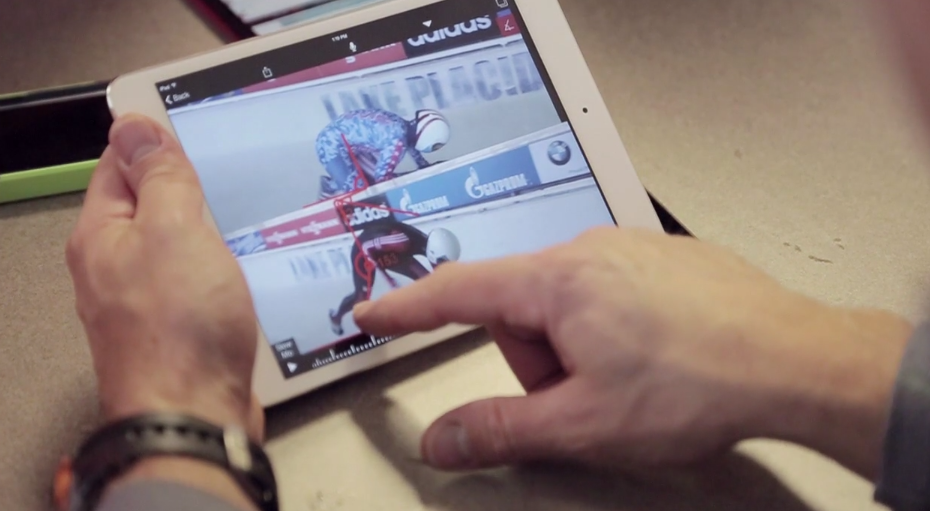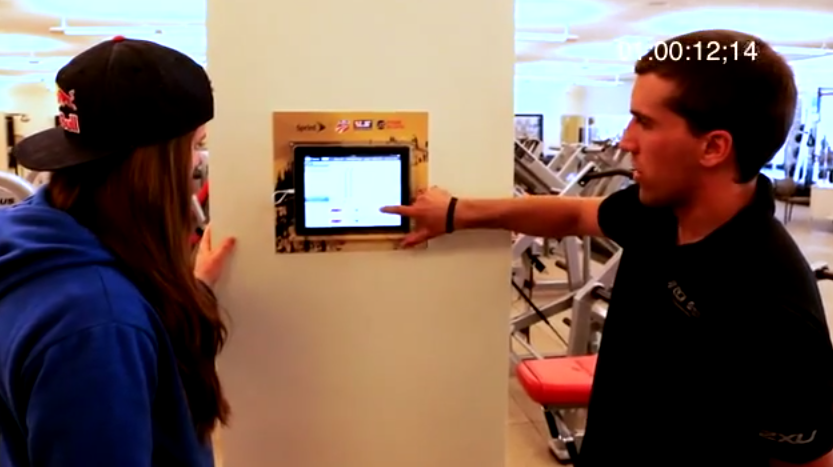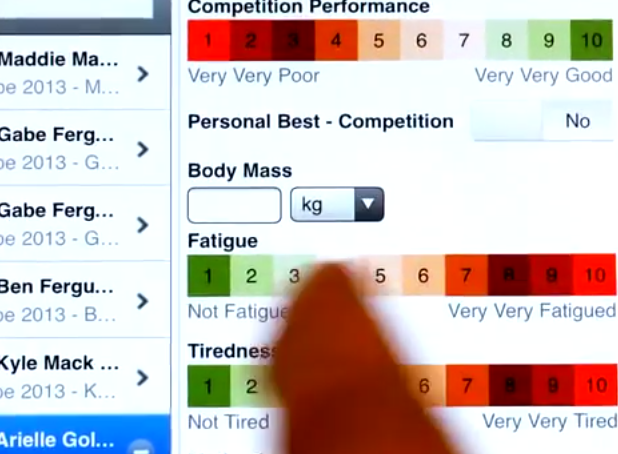How Technology is Changing the Way Athletes Train
Apps like Ubersense and AMPSports bring run-by-run data to skiers, bobsledders and other competitors
/https://tf-cmsv2-smithsonianmag-media.s3.amazonaws.com/filer/7f/d4/7fd44737-2f25-47dc-b4fd-4db7c94b35da/ubersenseinsochi.png)
The U.S. skeleton team's coach Tuffy Latour is no stranger to big data. But until a year and a half ago, using it quickly and effectively was a big hassle.
A former World Champion bobsled pilot, Latour—who has helped the U.S. and Canada earn gold medals in bobsled events—had long kept videos and stats on his athletes, but relied on a number of laptops, wires, charts and spreadsheets to do it. Meeting to review runs with athletes, some of whom were training on tracks across the world, was often a logistical nightmare.
As he geared up for the 2014 Olympics in Sochi, the coach stumbled upon a solution: Ubersense, a new app from a Boston-based startup that offers real-time video analysis and feedback via any smartphone or tablet, instead of the equipment Latour and his team had been lugging up and down mountains from Lake Placid to Austria.
“The app has taken us from the ‘dark ages’ of using a video camera, computer and hours of downloading video to a simple-to-use technology,” said Latour, as he was preparing to head to Russia in late January. “[It] has taken us to the next level in getting our athletes the video feedback they need to succeed.”
Through the app, every twist, turn, stunt or swing is captured—and shared with the athlete almost instantaneously. Coaches can upload and analyze the footage in a matter of minutes using slow motion, tracing and other comparison tools before sending it back to other coaches or directly to the members of each sled.
USA's skeleton and bobsled teams are among dozens of Olympic squads around the world that have turned to new technology to improve their training. But the most advanced programs, like Ubersense and AMPSport, used by the U.S. Ski Team, rely on real-time input and feedback to push athletes toward the podium.
In the case of the skeleton and bobsled teams, coaches are armed with Ubersense-loaded iPads at several points along the 1,200-meter-plus track. As athletes whiz by, they capture and upload the footage, creating a database they can access anywhere, day or night. With the athletes, coaches can compare new videos with footage from a day or year ago, or, with videos uploaded by other athletes around the world; they can also record drill and technique videos for athletes to follow as they prepare for competition.

For most athletes, it “is incredibly hard to see what they’re doing wrong,” says Ubersense founder Krishna Ramchandran. And while video analysis has long been used for elite teams, the technology used to deliver it has lagged surprisingly behind. When Zach Lund, the head driving coach for the U.S. bobsled team, was competing in World Cups throughout the 2000s, along with the 2010 Olympics, coaches still recorded runs using cassette tapes, he said in a video for the app.
Athletes often wouldn’t get feedback until the end of a practice; with the app, athletes have the chance to “improve technique by the next run, in a matter of minutes,” says Ramchandran.
“For a coach to watch a sled go by at 80, 90 miles per hour and to decipher everything that’s happening in a split second is almost impossible,” Lund said in the video, above, about his team’s training. “It’s really helped to make my job easier.”
/https://tf-cmsv2-smithsonianmag-media.s3.amazonaws.com/filer/27/fa/27fa102f-4037-430b-8663-7950ebc72c38/ubersensereview.png)
The U.S. Ski Team has found a similar solution in AMPSports, an app from Sprint that tracks competitors on and off the slopes. Director Oliver Sharpe says the company worked with elite coaches to develop the cloud-based software, which monitors everything from cardio improvements and lactate thresholds during strength workouts to an athlete’s stress level and diet, among other statistics, each day and over time.
The team had already been using tools like heart rate monitors and GPS trackers to train its athletes, but these metrics were logged "in huge three-ring binders and on Excel spreadsheets," says Sharpe.
With AMP, the data is streamlined into a single hub, where coaches can pull in charts, graphs and stats to evaluate performance and build and assign workouts. Since the program is cloud-based, the data is available anytime, anywhere, even without an internet connection. Team USA coaches regularly shoot and annotate video on the slopes, so feedback is available immediately after an athlete's run.

Coaches and athletes can pull up the data on their smartphones and tablets with the click of a button, offering a much easier way to pinpoint exactly when an athlete might have caused an injury or suffered a setback. If they see a gap in strength or endurance, they can tweak a workout plan and send it directly to an athlete’s phone before the next morning’s training session. They can also use it to compare an athlete to the performance of other athletes around the world.
“I've had the three most successful seasons of my career injury-free," Olympic snowboarding hopeful Kelly Clark told the Denver Post, noting she and her teammates routinely use the app on the slopes. "I can be traveling, and my trainer in Utah can keep tabs on me. Basically, there is no cheating for me when I'm working with this program."
While the program was created for Troy Flanagan, the high performance director of the U.S. Ski Team, to use at the Sochi games, it's also now being used by teams in the NBA and the AFL, Sharpe says.

As with all technology, there’s still room for improvement. For Ubersense, at the moment, that means finding a way to make the app drain less of a device's battery in frigid temperatures. Still, teams from Canada, the UK, South Korea, Austria, Spain and some Nordic countries prepared for the 2014 games using the app, says Ramchandran.
And even if you’re not quite cut out for the Olympics (we can’t all be on Wheaties boxes, after all), there’s hope for you yet; the app is available to everyday athletes, from high school teens to collegiate squads and professional teams. Currently, Ubersense has 2 million users across 30 sports. The community includes professional athletes; the atheletic programs at Harvard, Princeton, Duke, Florida State, Arizona State and Stanford; and Ramchandran, a triathlete who uses his own program to send data and receive feedback from a running coach in Chicago.
“We want to help people achieve goals in whatever sport they’re playing,” Ramchandran says. “It’s been great because these teams are at the elite level and really pushing those limits. We are able to take what we’ve learned from them and make it available to masses.”
/https://tf-cmsv2-smithsonianmag-media.s3.amazonaws.com/accounts/headshot/erica-hendry-240.jpg)
/https://tf-cmsv2-smithsonianmag-media.s3.amazonaws.com/accounts/headshot/erica-hendry-240.jpg)